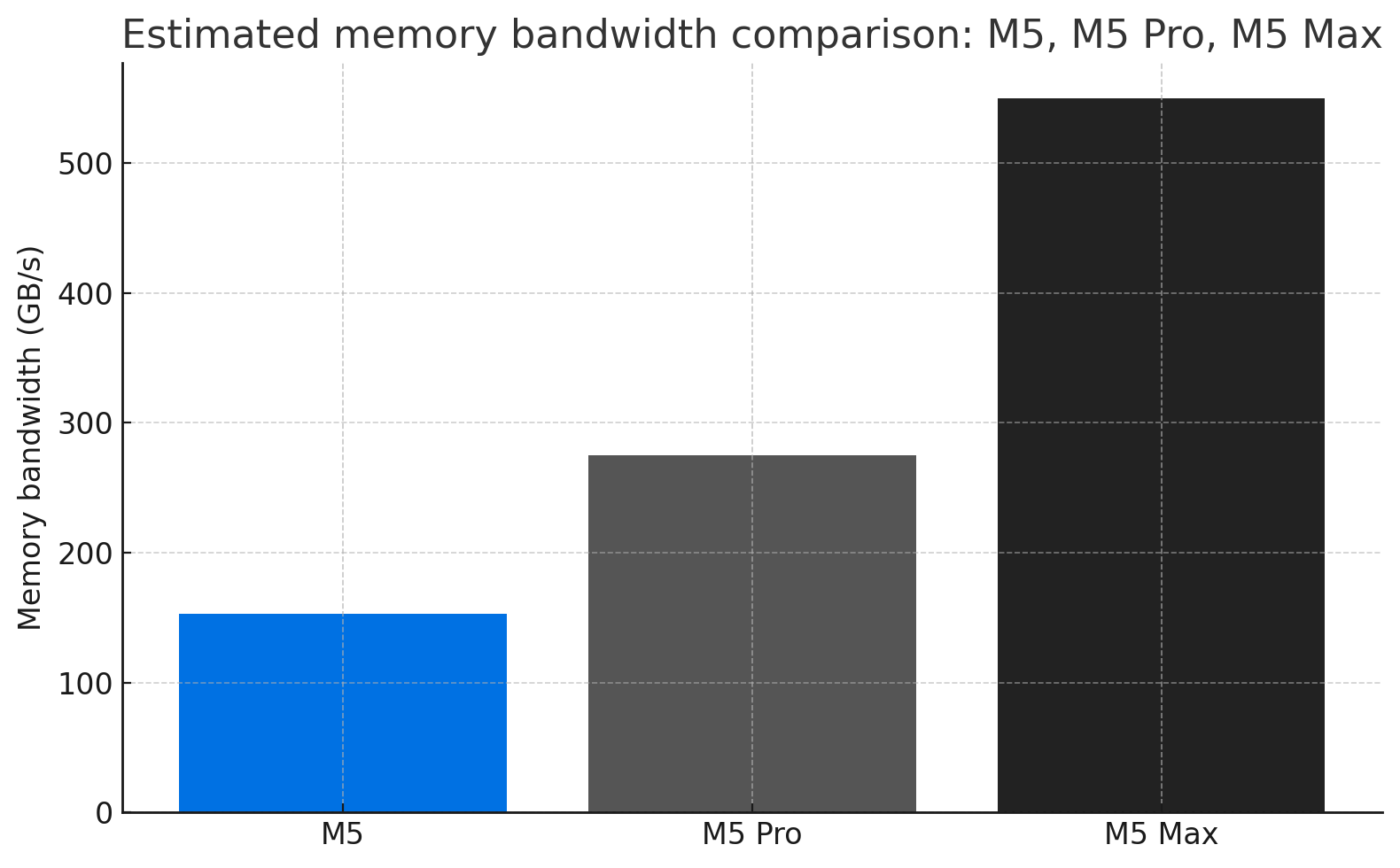- Memory bandwidth determines real-world performance for professionals running intensive workloads.
- Future M5 Pro and M5 Max chips could double performance for creative professionals
- The additional 275 GB/s bandwidth can save professionals time and money.
For professional users, one metric often determines whether a chip truly meets the demands of their work: memory bandwidth.
AppleThe recently announced M5 is the basis of the new 14-inch MacBook Pro and the iPad Pro (and the updated Apple Vision Pro), and as part of my series on Apple silicon, I thought it would be interesting to take a look at a possible future.
Apple hasn't announced or even hinted at variants of its new M5 Pro and M5 Max chip, and if they do appear, it likely won't be for at least a year. However, some educated guesses can be made as to what these versions can offer professionals.
Inside Apple Silicon: Part Four of a Five-Part Series on M-Class Processors
This article is the fourth in a five-part series that takes an in-depth look at Apple's M-class processors, from the early M1 to the recently announced M5 and our upcoming M5 Ultra. Each episode will look at how Apple's processors have evolved in architecture, performance, and design philosophy, and what those changes might mean for the company's future hardware.
M5 Pro and Max
We asked Google Gemini to take a look at previous Apple M chips and simulate what we could expect from the M5 Pro and M5 Max.
His predictions suggest that the same core architecture can dramatically increase throughput, a factor that impacts performance in ways that raw CPU or GPU data often doesn't reflect.
M5 base already increases unified memory bandwidth to 153 GB/s, which is almost 30 percent higher than its predecessor. For most users, this leap results in faster app responsiveness and smoother multitasking.
For data movement workloads such as multi-threaded editing 8K footage, training small AI models, or rendering in high-resolution 3D—the number is much larger than just a specification.
It determines how efficiently the processor transfers data to its computing units without waiting for memory to load.
Gemini's simulations indicate the M5 Pro will run at around 275GB/s, while the M5 Max will potentially double that figure to 550GB/s.
While these chips obviously don't exist yet, the projections illustrate Apple's likely path to pro-grade performance.
Essentially, the M5 Max will double the width of the memory interface, allowing applications that rely on real-time resource loading or large tensor operations to run at full speed without cache bottlenecks.
The additional throughput can directly translate into time savings on rendering and exporting for video editors, as well as shortening training cycles and making larger on-device models practical for AI developers, reducing reliance on cloud computing.
Over the course of a few months of production, these time savings and avoidance of cloud costs can potentially add up.
This focus on throughput rather than peak clock speed reflects a broader trend in chip design.
As compute units become more powerful, memory systems need to be scaled in parallel to prevent underutilization.
Assuming it follows this pattern, the M5 Max will not only be faster, but also handle peak workloads more efficiently over long sessions.
If these predictions hold true, Apple's next pro tier could provide a distinct advantage to users who depend on continuous, high-bandwidth processing.
In professional computing, memory speed remains a silent measure of real-world performance.

Follow TechRadar on Google News. And add us as your preferred source to get our expert news, reviews and opinions in your feeds. Be sure to click the “Subscribe” button!
And of course you can also Follow TechRadar on TikTok. for news, reviews, unboxing videos and get regular updates from us on whatsapp too much.








